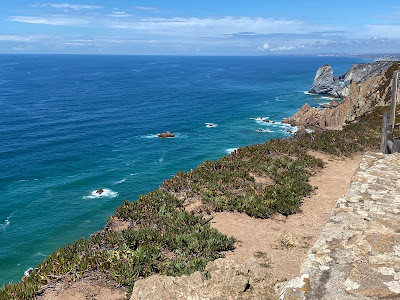June 24, 2022
After our morning at the Belém Tower and Jerónimos Monastery, we got an Uber to take us to the Gulbenkian Art Museum. A word here about Uber in Portugal: CHEAP. We rarely paid more than $7 for a ride, including a tip. We had planned to take the Lisbon metro everywhere, but why? This was faster and didn't break the bank, and somehow we were still getting in 10,000+ steps/day.
Established in 1957, the Gulbenkian Art Museum houses one of the most important private art collections in the world. It includes many pieces sold off by Leningrad's Hermitage Museum in 1930 and 1931, as well as works by the likes of Renoir, Rubens, Rembrandt, Rodin, Monet, Manet, Gainsborough, Ghirlandaio, Degas, Turner, and others.
Calouste Gulbenkian was born in what is now Turkey in 1869 and died in Lisbon in 1955. He made a fortune in petroleum and gave a lot of that fortune to philanthropic organizations. He also collected over 6,400 pieces of art during his lifetime, and a good portion of it is held by the museum that bears his name in Lisbon. Of the roughly 6,000 items held by the museum, about 1,000 are on display at any given time.
I was kind of hoping this gentleman in the lobby was Mr. Gulbenkian, but the plaque on the wall says he is Jean-D'Aire, the Burgher of Calais, and he was sculpted by Auguste Rodin in 1913.













.JPG)

.JPG)
.JPG)





.JPG)




